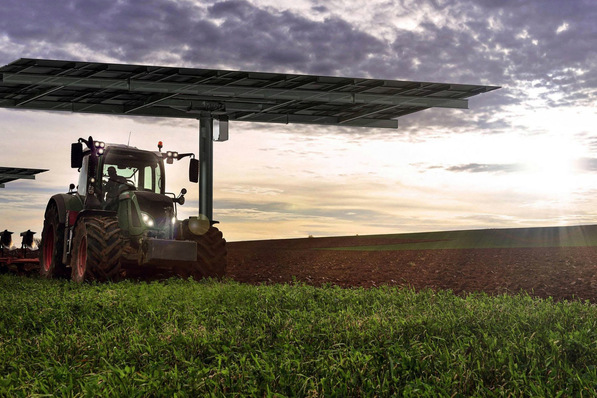For many people in southern Germany and northern Austria, the dates of December 2 and 3, 2023, will forever be etched in their memory. On these two days, huge amounts of snow fell in the space of just a few hours, while in Bavaria the snow reached record levels. „The remarkable fact was that before this snow event, the amount of rain that normally falls in the whole month of November fell within two days,“ recalls Cedrik Zapfe.
As CTO, he is responsible for product development at mounting system manufacturer Schletter in Kirchdorf/Haag, Upper Bavaria. The combination of immense quantities of rain and subsequent snow masses can certainly be problematic for photovoltaics, in particular for ground-mounted systems. „In the region, the piles of ground-mounted systems often sank by up to 40 centimetres,“ says Zapfe.
Extreme events almost impossible to predict
The effect of the rain was to soften the ground upon which the solar installations were standing. The weight of the subsequent snow on the modules pushed the posts of the mounting system downwards. „The planners had not designed the systems for such a situation, and that is understandable: there had never been such an event before,“ says Cedrik Zapfe.
Pile deeper?
This much is clear: the climate is changing and will continue to change. One of the many consequences is that the warming air is able to absorb much more water, leading also to heavier rainfall events. At the same time, large-scale weather situations will become more stable and high and low-pressure areas will move more slowly. As a result, these rain events will last for longer.
Expert tips: 9 strategies to optimize PV installations
It is not yet completely clear to what extent the planners of ground-mounted photovoltaic systems have to take this new reality into account. Solutions include driving the mounting posts deeper into the ground or specifying higher safety margins. „From a planning perspective, there is a solution for almost all structural problems. But the question is always whether it also makes economic sense,“ says Cedrik Zapfe. „We are still far from an understanding of whether the situation in Bavaria was a one-off event or whether weather conditions like this will occur again and again in the foreseeable future. That's why harmonised standards are important – also to keep competition in place. If the requirement to ram deeper does not apply to all planners, those who do so are at an economic disadvantage,“ summarises Zapfe.
Higher costs rarely acceptable
Indeed, if piles have to be driven deeper, costs are inevitably higher, especially in countries with high labour costs. Moreover, there are greater material costs as the posts need to be longer. This is a situation that very few solar park investors or planners are prepared to accept. If they operate the system themselves following installation, this acceptance is somewhat higher than if they intend to sell the solar park after construction.
You can read about the options being weighed up by planners and operators of solar power plants for coping with extreme weather events in the next episode of our series. In the third episode, we will focus on the challenges for rooftop solar power plants against the increasing likelihood of extreme weather events.








